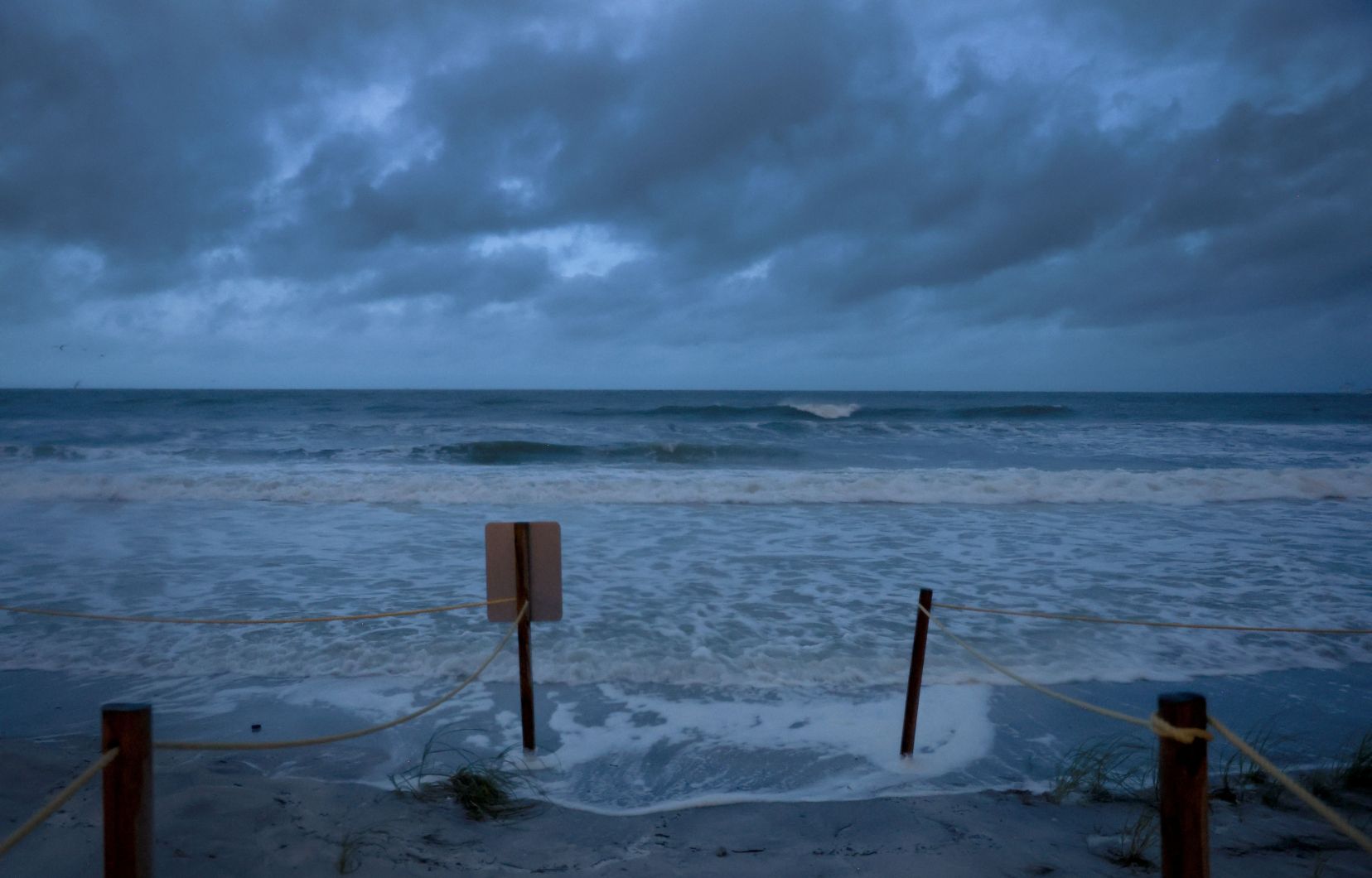The hurricane Miltonwhich is intensifying explosively, is the latest bizarre system to emerge from what veteran hurricane scientists consider the most bizarre storm season of their lifetime.
Before the start of the Atlantic hurricane season, forecasters predicted a particularly busy year. This is also what happened when Beryl was the earliest storm to reach Category 5 on record. Then, nothing more. From August 20 – the traditional start of the peak hurricane season – to September 23, it’s dead calm, notes Phil Klotzbach, hurricane researcher at Colorado State University.
Then five hurricanes appeared between September 26 and October 6, more than double the old record of two. On Sunday and Monday, there were three hurricanes in October at the same time, which has never happened before, Klotzbach said. In just 46.5 hours, the hurricane Milton went from a tropical storm with winds of 45 km/h to a Category 5 hurricane with winds of 260 km/h, and then strengthened further.
“I looked at the Atlantic records and there aren’t really any good analogs for this season because it was so neurotic,” Mr. Klotzbach said. The season is not over yet. We’ll see what happens next Milton. »
Kerry Emanuel, a professor of meteorology at MIT, has studied hurricane seasons since the 1980s. He’s never seen anything like this year, including a year when there were so many storms that forecasters found themselves ran out of names and had to use the Greek alphabet.
Dead calm…
Before hurricane season begins on the 1ster June, forecasters such as Mr. Klotzbach and the federal government looked at record ocean heat and the embryonic cooling La Niña in parts of the Pacific, which brings winds and other conditions ripe for hurricane formation . They made bold predictions of an extremely busy season. The predictions were almost unanimous.
When Beryl became a Category 5 hurricane in early July, they seemed prescient.
Then came mid-August. August 20 is such an important date for marking the start of peak hurricane season ― which lasts until mid-October ― that Bill Gray, a pioneer in hurricane season forecasting, used to ring, on this date, a bell like a sort of starting gun. This year, when a student rang the bell, the stormy activity seemed to stop almost completely. According to Klotzbach, the combination of the strength and duration of the storms made the following month the weakest on record.
This is strange, because the Gulf of Mexico, the Caribbean and parts of the Atlantic have experienced record or near-record temperatures, acting like gigantic gas stations for hurricanes. But the air also warmed to an unusual degree and more than the sea surface temperature. It’s the difference between water temperature and air temperature that matters, and it was simply too weak, Mr. Emanuel said.
In addition, a natural weather phenomenon caused air from above to sink into the lower levels above the Atlantic, making it more difficult for hurricanes to form, said Kristen Corbosiero, an atmospheric scientist at the University of Albany.
Meanwhile, dust from the African Sahara was spreading and hindering the development of systems that could become hurricanes, said Bernadette Woods Placky, chief meteorologist at Climate Matters, which studies weather phenomena for fingerprints of change. climate of human origin.
“I find it encouraging that there are fewer hurricanes,” said M.me Woods Placky. Although this has thrown off the forecast somewhat, we don’t want to see these devastating storms. »
But it didn’t last.
…to the explosion
The air aloft cooled, the sinking air moved away, and in the Gulf of Mexico, the Central American Gyre ― a swirling global weather system ― took over. This is how the rotation that gave rise to hurricanes began, explained M.me Corbosiero. The hurricane Helene was formed, followed by Isaac, Kirk, Leslie and now the monstrous Milton.
Helene was one of the largest storms in decades, allowing it to accumulate more moisture in the Gulf of Mexico and move inland until it hit the mountains, which caused even heavier rains.
Warming of the Gulf has increased precipitation, and human-caused climate change has increased the likelihood of warming waters more than 300-fold, Ms.me Woods Placky, based on his organization’s calculations. A flash study by researchers at the Lawrence Berkeley National Lab showed that climate change has increased precipitation byHelene by 50% in parts of Georgia and the Carolinas.
Helene rapidly intensified in these warm waters, but when Milton arrived, it strengthened at a much faster rate, quadrupling the speed of its winds in less than two days. Milton became the seventh storm in the past 20 years to gain at least 45 mph in wind speeds in just 24 hours, and none managed to do so between 1950 and 2000, Klotzbach said.
Mme Corbosiero and MM. Klotzbach and Emanuel said chance, other weather conditions, perhaps the eruption of an underwater volcano in 2022 that spewed lots of water vapor into the atmosphere, may have played a role in this strange hurricane season.
Mme Woods Placky says the future is bleak.
“The warmer we get, the worse these phenomena will become,” she said. There is a direct link between the damage we see in communities and the amount of greenhouse gases we emit into the atmosphere. »
